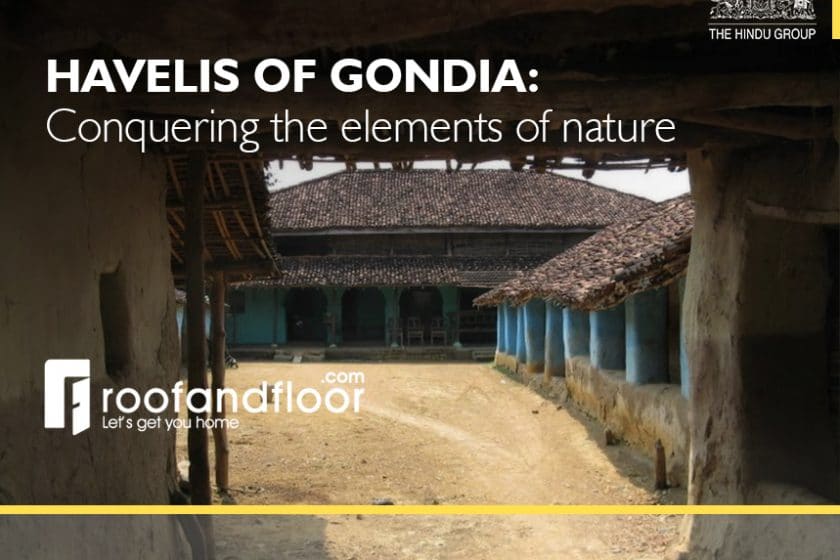Each unique culture inspires its own architecture design, which carries on the essence of that culture. Such traditional architecture personifies cultural aspects like lifestyle, social structure, and sensibilities of the people. The Gondia district of Maharashtra has witnessed a large number of rulers and the rule of Gond tribe. Each brought a new form of architecture with them. Over time, the traditional dwellings of this place, influenced by many disparate cultures, became typical for the region.
The Structure
The Gondia havelis were traditionally multi-tiered structures ranging from one to three storeys. The structures were generally pyramidal with the sloping roof to ease the flow of rainwater down from rooftops. The houses had no terraces. The houses usually had huge open verandahs or a large front courtyard for public gatherings. The walls were less than 1mm thick, on average. The entire structural layout was laid around a central space – usually the main bedroom. The adjoining area, furnished with a kitchen, was meant for women. The rear part of the house consisted of bathrooms and toilets for members of the family.
The central area was connected to two significant segments, the pooja-ghar, and the living room, in the front, to entertain guests. These areas often doubled up as the front courtyard. This portion of the house, apart from providing an open space for gatherings, consisted of a private liquor room for male members of the family along with a sheltered area for livestock. Parallel storage rooms were built-in to store fodder and food grains. Another characteristic feature was the low doors.
Building materials
Due to lack of effective transportation in the olden days, only local materials were used for buildings and facades. The supporting framework was done in teakwood, which was readily available in the jungles nearby. For construction requiring stones, grey granite was used, mainly as a plinth. The walls were developed in rural style with a mixture of mud, straw and cow dung.
Ingenious features that kept adversities of climate outside
The locals built their buildings and structures in new and unique ways to overcome the challenges of nature without modern gadgets and appliances.
- To keep their homes heat protected, the Gondia people made thick walls for their homes and increased buffer spaces. Low utility upper floors were added that acted like false ceilings to minimize heat. It was traditional to paint walls blue, which helped minimize heat absorption and kept the place cool.
- Overhanging, sloping roofs went a long way to protect the house from the glare of the sun and the rain. Planting and strategic layout helped to optimize the protection from adverse climatic conditions viz. hot and cold temperatures. By keeping the openings limited to the north and south direction, they ensured protection from the sun and heat.
The traditional Gondia homes were also influenced by external and natural factors like scorching heat in summers and freezing winds in winters. These havelis and mud houses were already being built to thwart adverse elements of nature, long before the advent of modern technology that brought ACs, heaters and other gadgets. These homes make a perfect example of how simple architecture was used effectively to the advantage of residents.

